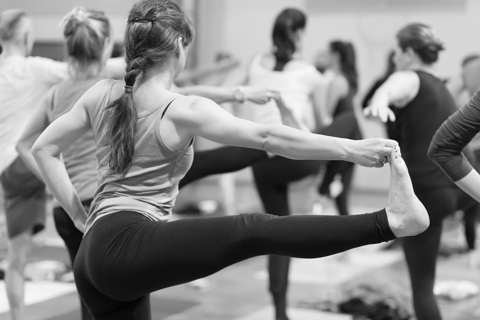General

What is Pilates?
This exercise system utilizing both mat and equipment-based exercises, dramatically and rapidly improves strength, flexibility, posture and overall alignment of the musculature and skeleton without increasing bulk. Pilates also strengthens the "powerhouse"- abdomen, back and buttocks so stabilizing the body and enabling it to move freely. It is an indispensable tool for athletes and unconditioned people alike enabling them to develop coordination, aesthetic form, strength and balanced posture.....READ MORE.
What is Gyrotonic exercise?
This system works to exercise the musculature while mobilizing and articulating joints. The uniqueness of the system is that it stretches and strengthens at the same time thereby increasing range of motion and developing coordination....READ MORE.
What is the difference between Pilates Mat and Yoga (and Gyrotonic Exercise)?
It's important to keep in mind that yoga and Pilates mat classes can vary a lot. For example, a yoga class that focuses on relaxation and stretching probably doesn't have as many strength-building benefits as a more vigorous vinyasa sesh or Intermediate Pilates Mat. That said, poses like warrior two and triangle can help strengthen leg muscles and lower bodies, while arm-balancing poses like side plank and crow can help strengthen arm muscles and upper bodies.
Joseph Pilates exercises Inverted V and Side lift are based on these exact Yoga exercises so Pilates students will be able to draw parallels between the approach of each system. These more demanding moves are an especially efficient way to utilize nearly all of your muscles. As with the Feldenkrais and/or the Gyrotonic systems there are not only parallels to be drawn and similarities to be found but also interesting and diverse approaches that link these modalities such that or clients achieve their fitness goals in a more rounded manner.
Which Mind Body System is right for me, Yoga or Pilates?
There are always differences between different but similar looking methods and it's completely understandable that you, the client, might be confused. One of the significant differences between Pilates and yoga, is that Pilates exercises can be executed either on a Mat or on specially designed Equipment. These two systems, in their own way, focus strongly on improving all aspects of physical fitness (flexibility, strength, posture, muscle tone) and incorporate a strong body/mind integrative component.
Why Iso Fit?
Iso Fit, established in 1998, offers an incomparable range of Pilates and Gyrotonic session types for clients to choose from in order to suit the experience, personal training goals, budget and scheduling requirements of our clients. From our range of equipment, to the quality of our instructors, to our special discount structure, we make exercise at Iso Fit an easy choice! Read more about what makes Iso Fit unique here.
Group vs Studio vs Rehab
Iso Fit offers a range of training options to our clients - there is something for all types of budgets, schedules and health goals.
Our popular group classes take place in a group environment of a maximum of 12 people (we try to ensure that clients are getting as much personal attention as possible by keeping the group classes small). These classes are run on a set schedule every day, which is published on our website and are a cost effective way of accessing Pilates exercise.
Studio sessions are more focused and tailored to the needs of the client, as these sessions are conducted in a one-on-one or two-on-one format.
Rehabilitation is conducted 1 on 1 with a qualified Physiotherapist and uses the full range of Pilates and Gyrotonic equipment as needed, and focuses on the specific rehabilitation needs of the client.
The format that you choose really depends on the level of attention that you will require from your instructor, as well your your own individual budget.....see your options here.
Can I do this at home?
Many exercises that you learn at Iso Fit can be done at home. In fact, this is recommended, as it will help sharpen the techniques that you learned in your lesson at Iso Fit and further prepare your body ahead of your next session. Please ask your instructor for some exercises that can be performed at home in between your sessions - Iso Fit also sells a range of products and accessories to enable you to perform even more exercises while at home, at work or on the road! See here from some Instructional Articles or visit the T8 Fitness Store to see the range of products and accessories that are on offer.
What do I wear?
Please make sure to wear appropriate exercise clothes - nothing too tight or too loose, which would inhibit your movement in any way. Please also note that socks are required. If you forget your socks, don't worry! We have charity socks available for purchase at HKD15 - all proceeds from these sales go to charity.
Is it ok to come straight after lunch (or a meal)?
Exactly how much you can eat before a session and how much time is needed between eating and exercise depends on the the individual. In general it is not advisable to exercise too soon after a full meal but attending an Iso Fit session at least half an hour after a light snack should be OK.
